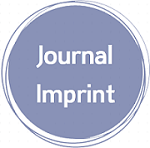Delayed Xenograft Transplantation of Mouse Olfactory Ensheathing Cells in Adult Rats
Downloads
Doi:10.28991/SciMedJ-2022-04-02-01
Full Text:PDF
Downloads
Delarue, Q., & Guérout, N. (2022). Transplantation of Olfactory Ensheathing Cells: Properties and Therapeutic Effects after Transplantation into the Lesioned Nervous System. Neuroglia, 3(1), 1–22. doi:10.3390/neuroglia3010001.
Chuah, M. I., & Au, C. (1991). Olfactory Schwann cells are derived from precursor cells in the olfactory epithelium. Journal of Neuroscience Research, 29(2), 172–180. doi:10.1002/jnr.490290206.
Huard, J. M. T., Youngentob, S. L., Goldstein, B. J., Luskin, M. B., & Schwob, J. E. (1998). Adult olfactory epithelium contains multipotent progenitors that give rise to neurons and non-neural cells. Journal of Comparative Neurology, 400(4), 469–486. doi:10.1002/(SICI)1096-9861(19981102)400:4<469::AID-CNE3>3.0.CO;2-8.
Lu, J., & Ashwell, K. (2002). Olfactory ensheathing cells: Their potential use for repairing the injured spinal cord. Spine, 27(8), 887–892. doi:10.1097/00007632-200204150-00021.
Li, Y., Li, D., & Raisman, G. (2005). Interaction of olfactory ensheathing cells with astrocytes may be the key to repair of tract injuries in the spinal cord: The “pathway hypothesis.” Journal of Neurocytology, 34(3–5), 343–351. doi:10.1007/s11068-005-8361-1.
Reshamwala, R., Shah, M., St John, J., & Ekberg, J. (2019). Survival and Integration of Transplanted Olfactory Ensheathing Cells are Crucial for Spinal Cord Injury Repair: Insights from the Last 10 Years of Animal Model Studies. Cell Transplantation, 28(1_suppl), 132S-159S. doi:10.1177/0963689719883823.
Nakhjavan-Shahraki, B., Yousefifard, M., Rahimi-Movaghar, V., Baikpour, M., Nasirinezhad, F., Safari, S., Yaseri, M., Moghadas Jafari, A., Ghelichkhani, P., Tafakhori, A., & Hosseini, M. (2018). Transplantation of olfactory ensheathing cells on functional recovery and neuropathic pain after spinal cord injury; Systematic review and meta-analysis. Scientific Reports, 8(1), 325. doi:10.1038/s41598-017-18754-4.
Wu, A., Lauschke, J. L., Morris, R., & Waite, P. M. E. (2009). Characterization of rat forepaw function in two models of cervical dorsal root injury. Journal of Neurotrauma, 26(1), 17–29. doi:10.1089/neu.2008.0675.
Gibney, S. M., & McDermott, K. W. (2009). Sonic hedgehog promotes the generation of myelin proteins by transplanted oligosphere-derived cells. Journal of Neuroscience Research, 87(14), 3067–3075. doi:10.1002/jnr.22138.
Yamamoto, M., Raisman, G., Li, D., & Li, Y. (2009). Transplanted olfactory mucosal cells restore paw reaching function without regeneration of severed corticospinal tract fibres across the lesion. Brain Research, 1303, 26–31. doi:10.1016/j.brainres.2009.09.073.
Li, Y., & Raisman, G. (1995). Sprouts from Cut Corticospinal Axons Persist in the Presence of Astrocytic Scarring in Long-Term Lesions of the Adult Rat Spinal Cord. Experimental Neurology, 134(1), 102–111. doi:10.1006/exnr.1995.1041.
Emmett, C. J., Jaques-Berg, W., & Seeley, P. J. (1990). Microtransplantation of neural cells into adult rat brain. Neuroscience, 38(1), 213–222. doi:10.1016/0306-4522(90)90387-J.
Keyvan-Fouladi, N., Raisman, G., & Li, Y. (2003). Functional Repair of the Corticospinal Tract by Delayed Transplantation of Olfactory Ensheathing Cells in Adult Rats. Journal of Neuroscience, 23(28), 9428–9434. doi:10.1523/jneurosci.23-28-09428.2003.
Trinh, V. T., Fahim, D. K., Shah, K., Tummala, S., McCutcheon, I. E., Sawaya, R., Suki, D., & Prabhu, S. S. (2013). Subcortical injury is an independent predictor of worsening neurological deficits following awake craniotomy procedures. Neurosurgery, 72(2), 160–169. doi:10.1227/NEU.0b013e31827b9a11.
Watanabe, K., Kondo, K., Yamasoba, T., & Kaga, K. (2007). Age-related change in the axonal diameter of the olfactory nerve in mouse lamina propria. Acta Oto-Laryngologica, 127(SUPPL. 559), 108–112. doi:10.1080/03655230701597598.
Whishaw, I. Q., & Pellis, S. M. (1990). The structure of skilled forelimb reaching in the rat: A proximally driven movement with a single distal rotatory component. Behavioural Brain Research, 41(1), 49–59. doi:10.1016/0166-4328(90)90053-h.
Americam spinal injury association Net. Available online: https://asia-spinalinjury.org/learning/ (accessed on January 2022).
Imaizumi, T., Lankford, K. L., Burton, W. V., Fodor, W. L., & Kocsis, J. D. (2000). Xenotransplantation of transgenic pig olfactory ensheathing cells promotes axonal regeneration in rat spinal cord. Nature Biotechnology, 18(9), 949–953. doi:10.1038/79432.
Yu, Y., Li, L., Lin, S., & Hu, J. (2022). Update of application of olfactory ensheathing cells and stem cells/exosomes in the treatment of retinal disorders. Stem Cell Research and Therapy, 13(1), 11. doi:10.1186/s13287-021-02685-z.
Zhang, L., Zhuang, X., Kotitalo, P., Keller, T., Krzyczmonik, A., Haaparanta-Solin, M., Solin, O., Forsback, S., Grönroos, T. J., Han, C., López-Picón, F. R., & Xia, H. (2021). Intravenous transplantation of olfactory ensheathing cells reduces neuroinflammation after spinal cord injury via interleukin-1 receptor antagonist. Theranostics, 11(3), 1147–1161. doi:10.7150/thno.52197.
Plant, G. W., Christensen, C. L., Oudega, M., & Bunge, M. B. (2003). Delayed transplantation of olfactory ensheathing glia promotes sparing/regeneration of supraspinal axons in the contused adult rat spinal cord. Journal of Neurotrauma, 20(1), 1–16. doi:10.1089/08977150360517146.
McKeon, R. J., Höke, A., & Silver, J. (1995). Injury-induced proteoglycans inhibit the potential for laminin-mediated axon growth on astrocytic scars. Experimental Neurology, 136(1), 32–43. doi:10.1006/exnr.1995.1081.
Choi, D., & Raisman, G. (2003). Immune rejection of a facial nerve xenograft does not prevent regeneration and the return of function: An experimental study. Neuroscience, 121(2), 501–507. doi:10.1016/S0306-4522(03)00433-0.
Cendales, L. C., Kanitakis, J., Schneeberger, S., Burns, C., Ruiz, P., Landin, L., Remmelink, M., Hewitt, C. W., Landgren, T., Lyons, B., Drachenberg, C. B., Solez, K., Kirk, A. D., Kleiner, D. E., & Racusen, L. (2008). The Banff 2007 working classification of skin-containing composite tissue allograft pathology. American Journal of Transplantation, 8(7), 1396–1400. doi:10.1111/j.1600-6143.2008.02243.x.
de Groen, P. C. (1989). Cyclosporine: A Review and Its Specific Use in Liver Transplantation. Mayo Clinic Proceedings, 64(6), 680–689. doi:10.1016/S0025-6196(12)65348-8.
Miach, P. J. (1986). Cyclosporin A in organ transplantation. Medical Journal of Australia, 145(3–4), 146–150. doi:10.5694/j.1326-5377.1986.tb113775.x.
Murohara, T., Ikeda, H., Duan, J., Shintani, S., Sasaki, K. I., Eguchi, H., Onitsuka, I., Matsui, K., & Imaizumi, T. (2000). Transplanted cord blood-derived endothelial precursor cells augment postnatal neovascularization. Journal of Clinical Investigation, 105(11), 1527–1536. doi:10.1172/JCI8296.
- This work (including HTML and PDF Files) is licensed under a Creative Commons Attribution 4.0 International License.












